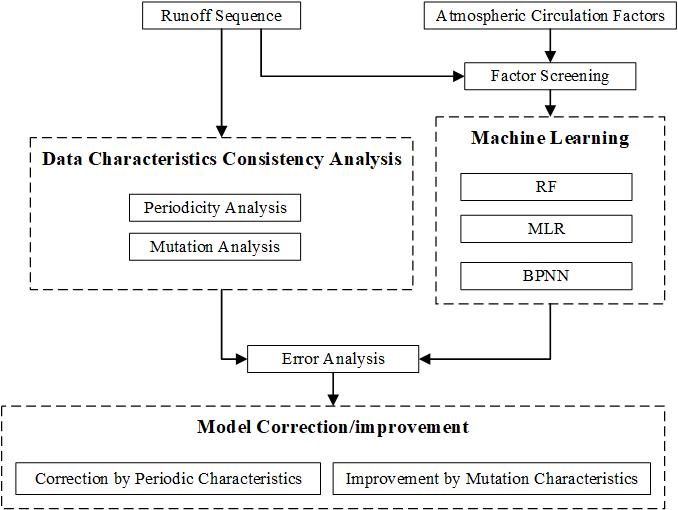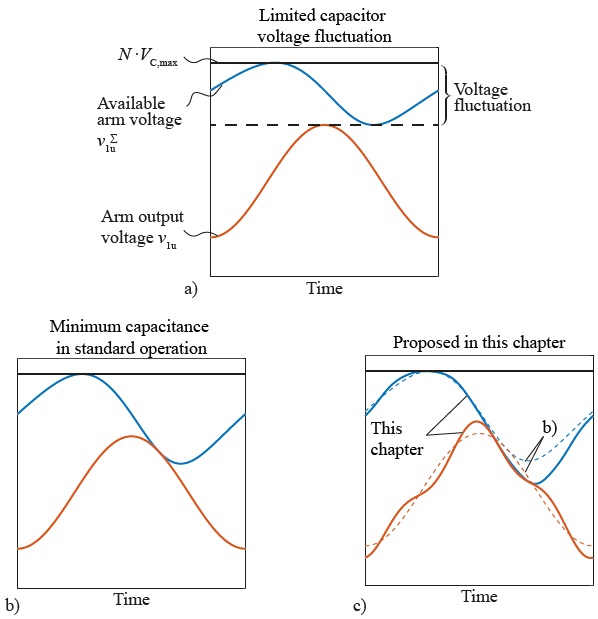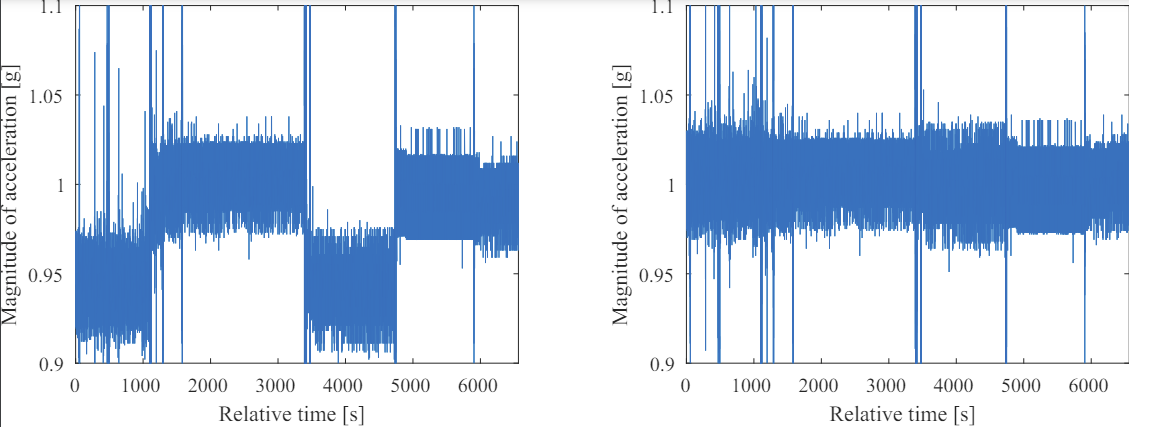NotiMind: Utilizing Responses to Smart Phone Notifications as Affective Sensors
Today’s mobile phone users are faced with large numbers of notifications on social media, ranging from new followers on Twitter and emails to messages received from WhatsApp and Facebook. These digital alerts continuously disrupt activities through instant calls for attention. This paper examines closely the way everyday users interact with notifications and their impact on users’ emotion. Fifty users were recruited to download our application NotiMind and use it over a five-week period. Users’ phones collected thousands of social and system notifications along with affect data collected via self-reported Positive and Negative Affect Schedule tests three times a day. Results showed a noticeable correlation between positive affective measures and keyboard activities. When large numbers of post and remove notifications occur, a corresponding increase in negative affective measures is detected. Our predictive model has achieved a good accuracy level using three different ”in the wild” classifiers (F-measure 74%–78% within-subject model, 72%–76% global model). Our findings show that it is possible to automatically predict when people are experiencing positive, neutral, or negative affective states based on interactions with notifications. We also show how our findings open the door to a wide range of applications in relation to emotion awareness on social and mobile communication.
View this article on IEEE Xplore
LEO Satellite Constellation for Internet of Things
Internet of Things (IoT) is one of the evolutionary directions of the Internet. This paper focuses on the low earth orbit (LEO) satellite constellation-based IoT services for their irreplaceable functions. In many cases, IoT devices are distributed in remote areas (e.g., desert, ocean, and forest) in some special applications, they are placed in some extreme topography, where are unable to have direct terrestrial network accesses and can only be covered by satellite. Comparing with the traditional geostationary earth orbit (GEO) systems, LEO satellite constellation has the advantages of low propagation delay, small propagation loss and global coverage. Furthermore, revision of existing IoT protocol are necessary to enhance the compatibility of the LEO satellite constellation-based IoT with terrestrial IoT systems. In this paper, we provide an overview of the architecture of the LEO satellite constellation-based IoT including the following topics: LEO satellite constellation structure, efficient spectrum allocation, heterogeneous networks compatibility, and access and routing protocols.
View this article on IEEE Xplore
New Impact Factor of 3.244
IEEE Access has an impact factor of 3.244, an Eigenfactor of 0.00699, and an article influence score of 1.15 (per 2016 JCR).
The journal has also been accepted into:
- The Clarivate Analytics Science Citation Index Expanded
- Journal Citation Reports/Science Edition
- Current Contents/Engineering, Computing and Technology Edition

IEEE Access Reaches 3,000 Published Articles
IEEE Access, the award-winning multidisciplinary open access journal, has published over 3,000 articles on IEEE Xplore since its inception in 2013. The journal was accepted into Clarivate Analytics Web of Science in late 2015 and has an impact factor of 3.244, an Eigenfactor of 0.00699, and an article influence score of 1.15 (per 2016 JCR).
Our sincere appreciation to all of our Editorial Board Members, Associate Editors, Authors, and Reviewers for making this multidisciplinary journal worthy of the IEEE.
A Holistic Approach to Transforming Undergraduate Electrical Engineering Education
Our diverse team of educators at Colorado State University are redefining what it means to teach and learn in the Department of Electrical and Computer Engineering. Supported by a five-year “RED” grant from the National Science Foundation, we are, in effect, throwing away courses to overcome the challenges of the current engineering educational system. Approaching the degree from a holistic perspective, we no longer view our program as a set of disparate courses taught by autonomous (and isolated) faculty, but as an integrated system that fosters collaboration among faculty and students. This paper describes our new organizational and pedagogical model, which emphasizes knowledge integration and interweaves thematic content threads throughout the curriculum. We also share our process for implementing the new approach, along with the successes and challenges that we have experienced along the way. Through this project, we strive to become a catalyst for change in engineering education.
View this article on IEEE Xplore
Fairness in Futuristic Wireless Networks: Applications, Implementation, Issues, and Opportunities
Submission Deadline: 31 December 2018
IEEE Access invites manuscript submissions in the area of Fairness in Futuristic Wireless Networks: Applications, Implementation, Issues, and Opportunities.
When thinking about the equity or equivalence in the operations and management of wireless networks, the key parameter need to be considered is fairness. Fairness is to provide an unbiased working environment for the distribution, sharing, allocation, and supply of resources among the devices of the system. From traditional to emerging wireless networks, fairness plays an important role at every layer of communication. Fairness maintains balance and stability between the operations of communication systems and thus improves the performance of wireless networks. Fairness is a key factor to achieve the optimal results for the parameters like throughput, Quality of Service (QoS), Spectrum utilization, Power, and Resource Management in wireless network.
The modern era of communication systems has introduced promising wireless technologies and concepts. These emerging technologies have evolved the concept of futuristic wireless networks. For the smooth operation and performance of these networks, a key factor is to establish fairness among the devices of these networks. Fairness impact the capabilities of these wireless network by controlling and managing key parameters of bandwidth, spectrum sensing, channel selection, resource sharing, and task scheduling.
The main focus of this Special Section in IEEE Access is to highlight the research on the issues related to spectrum, channel & resource management and cross layers communication in wireless communications. This Special Section will cover the topics related to the role of fairness in performance analysis, resource management and its application in futuristic networks. It also covers the solutions and algorithms of resource scheduling and offloading techniques which provide sustainability to the networks.
The topics of interest include, but are not limited to:
- Fairness in Spectrum Management and Resource Sharing of Networks:
- Fair Spectrum management Techniques in IoT environments.
- Fairness in Spectrum sharing in Cognitive Radio Network (CRN).
- Resource sharing fairness in Cloud Computing.
- Managing energy resources in fair environment for Smart Grids.
- Fairness in Channel management for Internet of Vehicles (IoV) and Unmanned Aerial Vehicles (UAV)
- Role of Fairness in Performance Analysis of Futuristic Networks:
- Impact of Fairness on QoS in IoT operations.
- Protocols under Fair strategies in Cognitive Radio Network (CRN).
- Energy management in Smart Grid under fair strategies.
- Role of Fairness for secure communication in vehicular environments.
- Performance analysis under fair routing strategies in Software Define Networks (SDN).
- Issues and opportunities for Fairness in Futuristic Wireless Network:
- Fairness models for IoT implementations across different domains of life.
- Fairness in IoV and UAV implementations for Intelligent Transport Systems.
- Managing Smart Grid operations with fairness.
- Fairness in SDN implementation and operations.
- Role of fairness in CRNs based operations for smart cities.
We also highly recommend the submission of multimedia with each article as it significantly increases the visibility, downloads, and citations of articles.
Associate Editor: Tariq Umer, COMSATS Institute of Information Technology, Pakistan
Guest Editors:
- Mubashir Husain Rehmani, COMSATS Institute of Information Technology, Pakistan
- Qiang Ni, Lancaster University, U.K.
- Samee U. Khan, , North Dakota State University, U.S.A.
- Waleed Ejaz, Ryerson University, Canada
Relevant IEEE Access Special Sections:
- Modelling, Analysis, and Design of 5G Ultra-Dense Networks
- Advances in Interference Mitigation Techniques for Device-to-Device Communications
- Convergence of Sensor Networks, Cloud Computing, and Big Data in Industrial Internet of Things
IEEE Access Editor-in-Chief: Michael Pecht, Professor and Director, CALCE, University of Maryland
Paper submission: Contact Associate Editor and submit manuscript to:
http://ieee.atyponrex.com/journal/ieee-access
For inquiries regarding this Special Section, please contact: t_umer@yahoo.com
Design and Analysis of a Reconfigurable Holographic Metasurface Aperture for Dynamic Focusing in the Fresnel Zone
We present numerical simulations of the near-field focusing capabilities of a dynamically reconfigurable holographic metasurface aperture. The aperture consists of a parallel-plate waveguide in which the upper plate is patterned with a number of metamaterial irises that can be dynamically switched between radiating (ON) and non-radiating (OFF) states. A cylindrically symmetric waveguide mode, excited by a coaxial probe in the center of the lower plate, serves to excite the radiating irises, forming a focused spot in the radiating near-field (or Fresnel zone). The layout of the metamaterial elements and their tuning states is determined using holographic design principles, in which the interference pattern of the waveguide (or reference) mode and the desired radiated field pattern leads to the required phase distribution over the surface of the aperture. We also develop an analytical model of the aperture to confirm the numerical simulations, and to illustrate the advantage of the guided-mode as the reference wave versus a plane-wave. We further leverage this analytical model to analyze the diffracted order characteristics of the holographic metasurface aperture, showing high-fidelity focusing patterns even for difficult focusing scenarios across the entire investigated field-of-view.
View this article on IEEE Xplore
Ambient Intelligence Environments with Wireless Sensor Networks from the Point of View of Big Data and Smart & Sustainable Cities
Submission Deadline: 30 April 2018
IEEE Access invites manuscript submissions in the area of Ambient Intelligence Environments with Wireless Sensor Networks from the Point of View of Big Data and Smart & Sustainable Cities.
This Special Section in IEEE Access was conceived during the organization of the 11th International Conference on Ubiquitous Computing and Ambient Intelligence UCAmI 2017, (IWAAL & AmI HEALTH included) held in Villanova University, Philadelphia (Pennsylvania, USA) from November 7th to 10th, 2017.
Ambient Intelligence Environments are an exciting topic of research, which span a wide number of research and application domains among them the smart city concept. In the underlying of smart cities, big data applications are developed that support smart components to reach the required level of sustainability and improve the living standards by means of wireless sensor networks.
This Special Section in IEEE Access aims to provide a forum for the dissemination of research based on Ambient Intelligence Environments, paying attention to Big Data and Smart & Sustainable Cities by wireless sensor networks. In this context, this Special Section is an open call to industrial and academic researchers to illustrate pursue a representative collection of recent advancements within ambient intelligence environments focus on Big Data and Smart & Sustainable Cities by wireless sensor networks that present new research contributions on theories, models and algorithms, and applications.
Associate Editor: Macarena Espinilla, University of Jaén, Spain
Guest Editors:
- Javier Medina, University of Jaén, Spain
- José Gabriel Urzaiz Lares, Anahuac Mayab University, México
- Pritpal Singh, Villanova University, USA
Relevant IEEE Access Special Sections:
- Convergence of Sensor Networks, Cloud Computing, and Big Data in Industrial Internet of Things
- The New Era of Smart Cities: Sensors, Communication Technologies and Applications
- Advances of Multisensory Services and Technologies for Healthcare in Smart Cities
IEEE Access Editor-in-Chief: Michael Pecht, Professor and Director, CALCE, University of Maryland
Paper submission: Contact Associate Editor and submit manuscript to:
http://ieee.atyponrex.com/journal/ieee-access
For inquiries regarding this Special Section, please contact: mestevez@ujaen.es
A Three-Dimensional Adaptive PSO-Based Packing Algorithm for an IoT-Based Automated e-Fulfillment Packaging System
With the development of online shopping and the demand for automated packaging systems, we propose an Internet of Things (IoT)-based automated e-fulfillment packaging system and a 3-D adaptive particle swarm optimization (PSO)-based packing algorithm. The proposed system leverages the IoT to connect the data collection and conversion layer, the packaging management layer, the decision-making layer, and the application layer. A cyber network connects each robot, sensor, and smart machine to achieve high velocity, flexibility of procedures, and real-time information exchange. When customers order merchandise online, the orders are received and rearranged, and the deployment of items in a box is planned by the system. The proposed packing algorithm controls the arrangement of items. It compares the size and volume of items and boxes to choose a box of suitable size, as well as deciding on the optimal arrangement of items. This algorithm solves the difficult 3-D Multiple Bin Size Bin Packing Problem (3-DMBSBPP) by integrating an adaptive PSO-based configuration algorithm. Our simulation results show that the packing algorithm can deploy items appropriately, with all items packed inside their box without overlap and with an overall center-of-gravity close to the bottom center of the box. When all the items cannot be packed into a single box, the proposed dividing strategies split the items into groups to pack into two or more boxes of similar size. Furthermore, comparing with the real packages we assessed, the proposed algorithm has a competitive performance. Lastly, our robotic experiments show that the proposed packing algorithm can be implemented and executed by a robot and a manipulator. It also demonstrates the efficiency of this system, in which all devices communicate well with each other and the robots accomplish the packaging task successfully and cooperatively.
View this article on IEEE Xplore
Characterizing the Performance of LED Reflective Distance Sensors
The use of light emitting diode reflective distance sensors (LED-RDS) for high-resolution displacement measurement is a cost-effective and inherently safe alternative to sensors using lasers and optical fibers. Experimental testing shows that a variety of distance ranges are achievable depending on the geometry of the LED-RDS chosen. The use of an LED-RDS without focusing lens offers higher resolution, making it suited to measure displacements in the micrometer range. Results from testing the SFH9206 on a target with a modest reflectivity of 31% indicate that the LED-RDS offers sensitivity of 52.8 %/mm, over a linear range of 540 μm . With a focus on LED-RDS with GaAs-based LEDs, thermal drift of the sensors is theoretically modeled and compensation circuitry proposed. Results for the SFH9206 show the thermal drift to be linear, and the compensation circuitry effective, between 25 °C and 35 °C. As a consequence, at room temperatures, the compensation circuitry also reduces the noise, as measured by the Allan deviation and standard deviation. With a 3-dB bandwidth of 5.56 Hz, the compensation circuitry gives an LED-RDS signal with resolution below 1 μm . LED-RDS are mass produced and primarily find their application as source/detectors in encoders and barcodes scanners and as position sensitive devices in mobile robots. This paper suggests that LED-RDS also have the potential for analogue displacement measurements at high resolution.





Follow us: